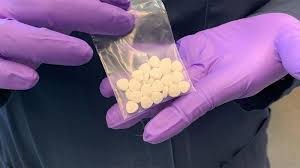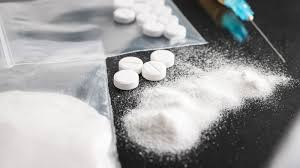In the ever-evolving landscape of illicit drugs, a relatively new and highly synthetic opioid has emerged: Protonitazene. With a potency surpassing that of fentanyl—one of the most infamous drugs in recent memory—Protonitazene represents a growing threat to public health, law enforcement, and communities worldwide. Often flying under the radar, this powerful compound is now linked to a rising number of overdose deaths and is rapidly becoming a focus of concern among experts.
What Is Protonitazene?
Protonitazene belongs to the nitazene class of synthetic opioids. This group of compounds was originally developed in the 1950s by pharmaceutical researchers in an attempt to discover non-addictive painkillers. However, most of these substances were never approved for medical use due to their extreme potency and high potential for abuse.
Protonitazene, in particular, is estimated to be hundreds of times stronger than morphine and significantly more potent than fentanyl. This sheer potency makes it highly dangerous, especially when users are unaware of its presence in street drugs.
How It Works in the Body
Like other opioids, Protonitazene works by binding to the body’s mu-opioid receptors, which are primarily responsible for pain relief and feelings of euphoria. However, due to its potency, Protonitazene can quickly overwhelm these receptors, leading to severe respiratory depression—a common cause of death in opioid overdoses.
Even tiny amounts of Protonitazene can cause overdose. This risk is exacerbated when the drug is mixed with other opioids or stimulants (as is often the case in street drug formulations), or when it's consumed unknowingly by individuals who believe they are using heroin, oxycodone, or another familiar substance.
Emergence and Spread
Protonitazene started appearing in toxicology reports and law enforcement seizures around 2021 in parts of Europe and North America. Its rise has been partly attributed to the crackdown on fentanyl manufacturing and distribution, which has pushed illicit drug producers to seek new synthetic alternatives.
The drug is typically sold in powder form, pressed into counterfeit pills, or mixed with other opioids. It may also be included in substances sold as “fake Xanax,” “Oxy,” or even cocaine, creating a lethal mix that unsuspecting users may consume.
Overdose and Detection Challenges
One of the biggest challenges with Protonitazene is that it is not widely tested for in standard drug screenings. This makes it difficult for emergency responders and healthcare providers to quickly identify the substance during overdose incidents.
Signs of a Protonitazene overdose are similar to other opioid overdoses and include:
-
Difficulty breathing or stopped breathing
-
Pinpoint pupils
-
Unresponsiveness
-
Cyanosis (blue-tinted lips or fingernails)
Standard doses of naloxone (Narcan), the life-saving opioid reversal drug, may be less effective due to Protonitazene’s high potency. Multiple doses of naloxone are often required, and even then, the outcome may be uncertain without immediate medical intervention.
Legal Status and Regulation
Many nitazenes, including Protonitazene, were initially unscheduled, meaning they were not regulated under national or international drug control laws. As reports of overdoses and seizures increased, countries began moving to classify Protonitazene as a controlled substance.
In the United States, Protonitazene has been temporarily placed in Schedule I of the Controlled Substances Act by the Drug Enforcement Administration (DEA), marking it as a drug with no accepted medical use and a high potential for abuse.
Similarly, countries like the UK, Canada, and several in the EU have begun to monitor or regulate this substance as part of efforts to stem its proliferation.
Public Health Response
Public health agencies, harm reduction advocates, and addiction specialists are working hard to stay ahead of the curve. Key strategies being pursued include:
-
Expanding drug testing capabilities to include emerging synthetic opioids like Protonitazene.
-
Distributing naloxone widely and training communities in how to use it effectively.
-
Educating the public about the dangers of counterfeit pills and unknown street drugs.
-
Monitoring trends through forensic toxicology and overdose surveillance systems.
These steps are critical because the introduction of each new synthetic opioid raises the risk of mass overdoses and further strains on already overwhelmed public health and emergency response systems.
What Can You Do?
Whether you're a concerned citizen, a healthcare worker, or someone personally affected by the opioid crisis, here are some ways to take action:
-
Stay informed about emerging substances and drug trends.
-
Talk to your community about the risks of synthetic opioids.
-
Advocate for harm reduction services, including naloxone distribution and drug checking programs.
-
Support legislation that promotes access to treatment and recovery programs.
The rise of Protonitazene underscores a troubling reality: as enforcement targets one substance, others—often more potent and dangerous—emerge to take its place. Combating this evolving crisis will require innovation, vigilance, and compassion.
Protonitazene may not yet be a household name, but its impact is being felt in emergency rooms and morgues across the globe. By raising awareness and taking action now, we can help prevent future tragedies and push for smarter, more humane responses to the opioid epidemic.
Contact Us
WhatsApp:+86 171 0282 1847
Email:info@nitazenechems.com
Website: https://nitazenechems.com/




Comments
Post a Comment